Name: Jasmine Pradissitto
Which came first in your life, the science or the art?
Being eternally curious is the thing I do remember… and loving colour and rainbows. I have always been inquisitive and analytical – had to know more, but it’s hard for me to separate one subject from the other; they both intuitively join in my connecting of dots. But I think it was always the drawing and colour that came first. As a very small child, we often went back to Italy and had a wonderful painter friend. I would sit and watch, apparently for hours, and I remember sitting on the floor being surrounded by big picture books that I would copy. Later, imagining I would become a Doctor of Medicine, I studied all the sciences, but it was the hours I spent on the drawings in biology that should have hinted that I could eventually only be an artist. And even after, my doctoral research was related, being in light and optics and with Dulux paints, I worked with refinish car paints. It’s strange how the narrative leading to ‘now’ forms without you even being aware.
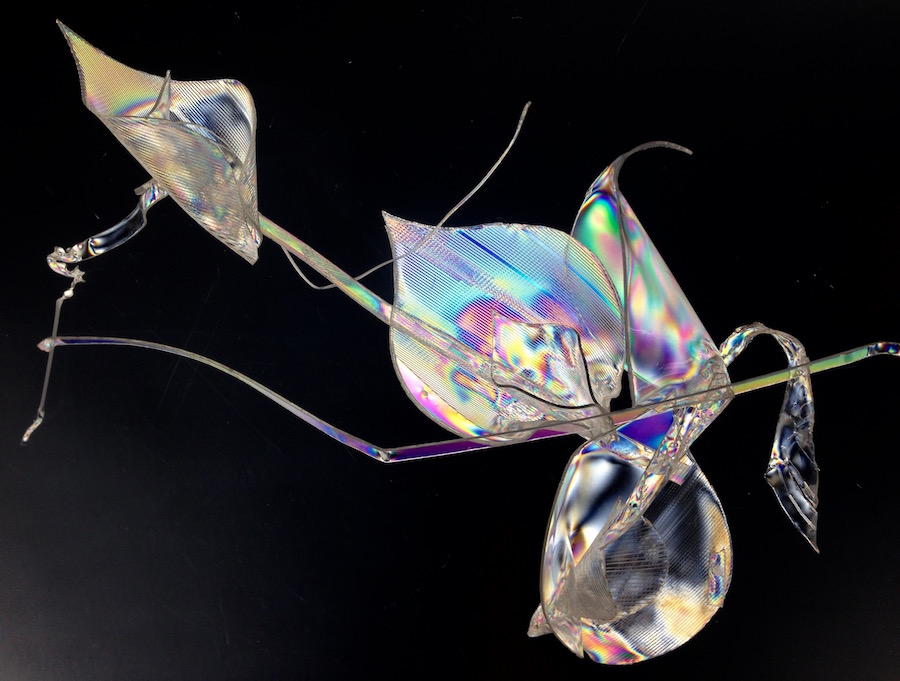
Disrupted Orchid
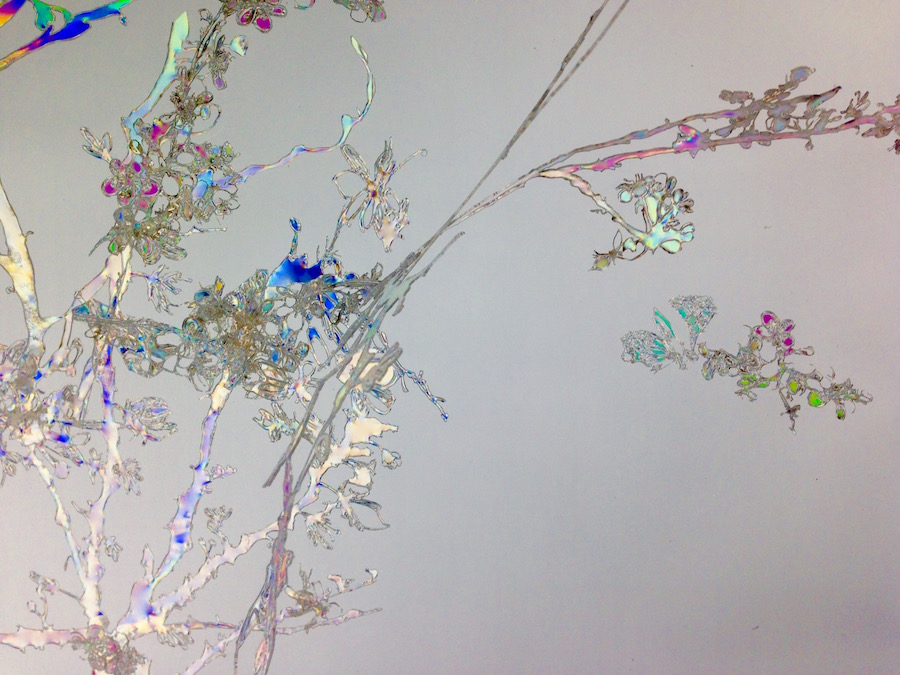
The Perfect Blossom
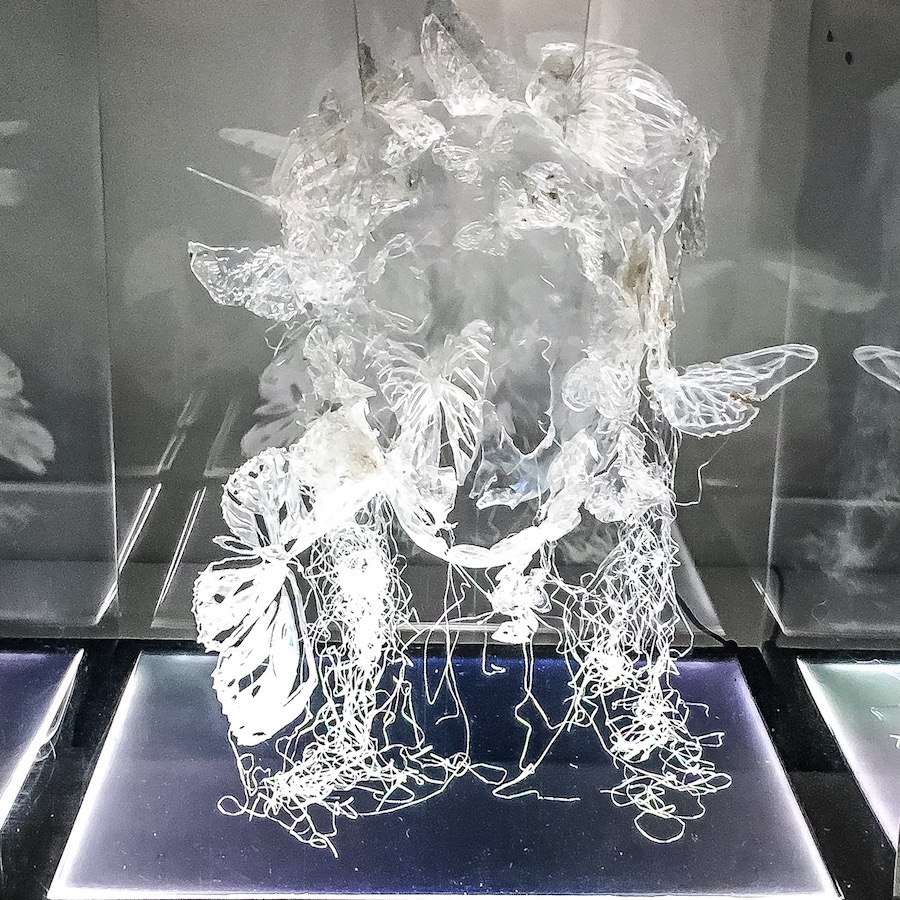
Dystopia
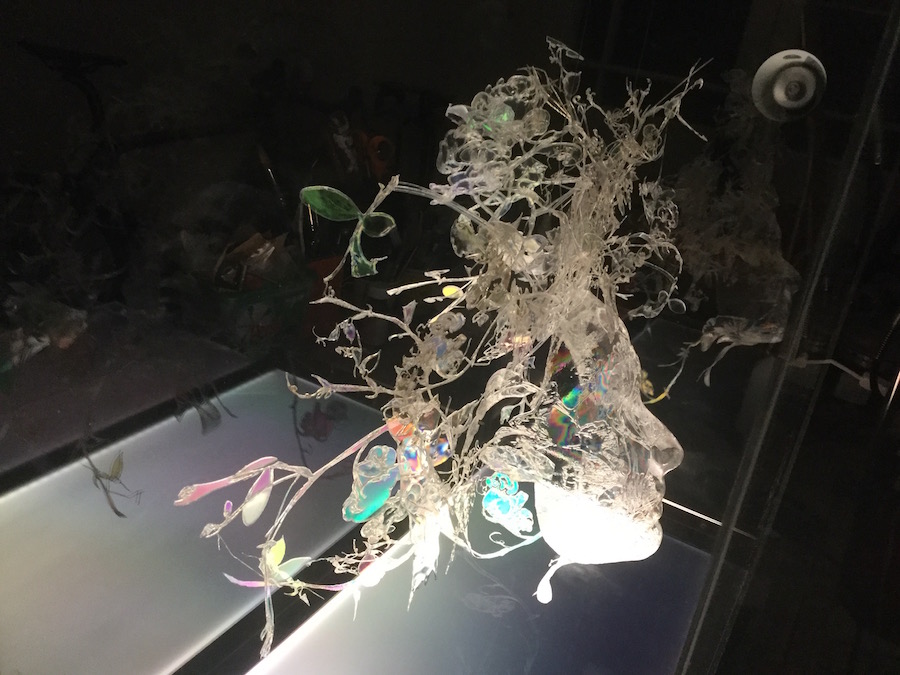
Gaia
Which sciences relate to your art practice?
This is a tough one, as I tend to go to all the physical sciences for processes and particularly the new branches, such as quantum, biosciences and engineering to look for inspiration. When I first started consciously joining the traditional art practices I had trained in such as anatomy, portraiture and painting with science, it was very academic and based on the physics of harmonics, gravity and the mathematical laws of chaos and cymatics. But once I had explored the nature of the ‘perfect line’, which was very monochromatic, I returned to the changing colours in the quantum sculptures I now make.
I had to do a lot of quantum mechanics during my time as a scientist and it was very challenging for me, as I am not gifted at maths. The only way I coped was through visual representations of difficult concepts. The idea that there is a degree of uncertainty, which is far larger for tiny things, but still inherent in the macroscopic world, has always fascinated me. These sculptures are called ‘Quantum’, as they borrow from the dual nature of light, but also obey the fundamental rule that we effect the things we observe. I like to imagine with art, we can make it a two way process.
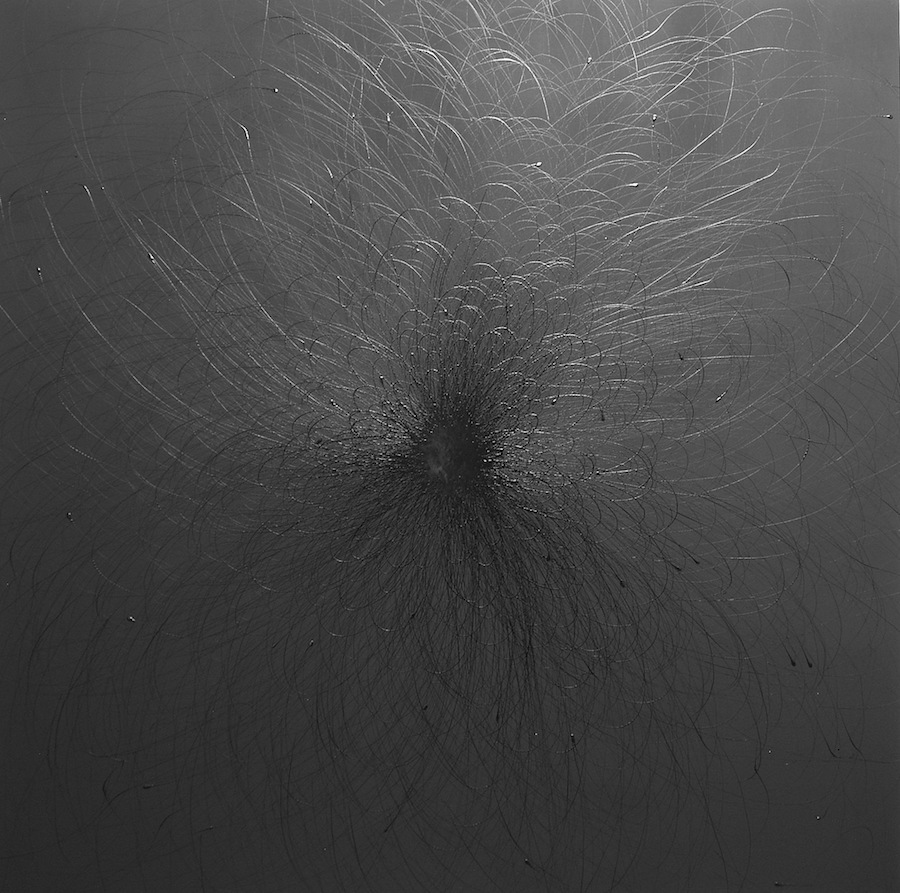
Carbon 12
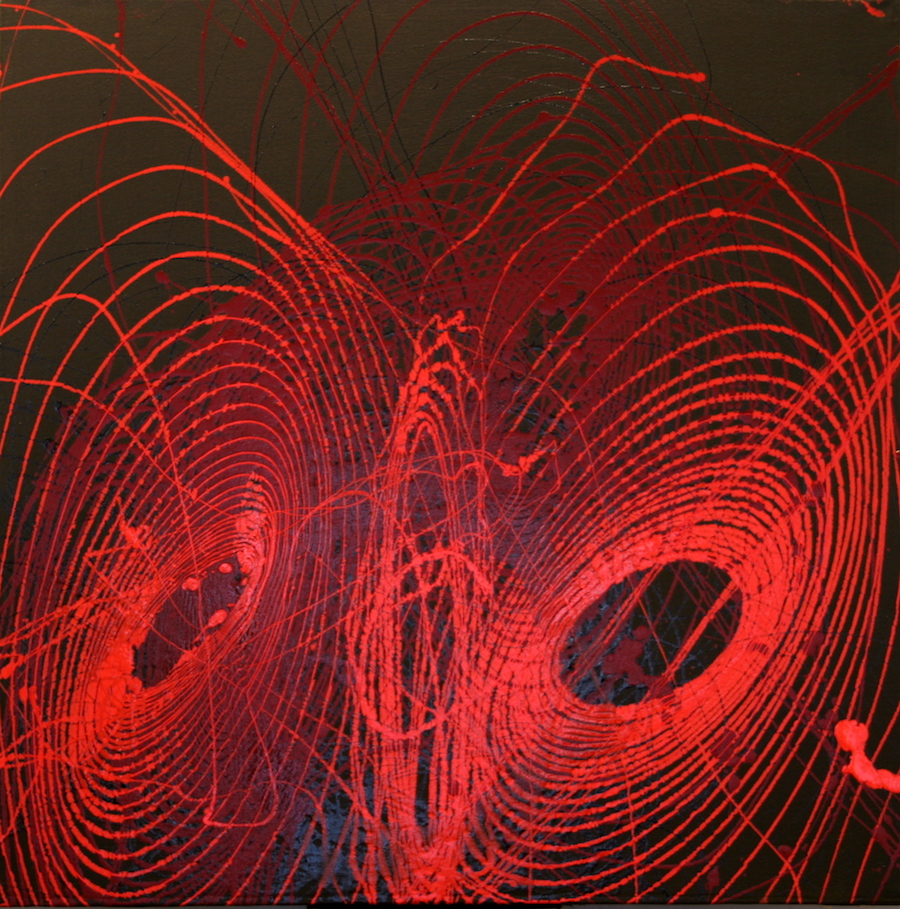
H2O Molecule
What materials do you use to create your artworks?
I use a variety or materials and processes, and am still very much an experimentalist who returns to drawing and painting regularly when I am exploring new ideas. I use plastics to create my work because of how malleable they are and how they interact with light, but also as a commentary on the Anthropocene world we are creating through our use of carbon fuels. Previously, I built installations and have done everything from print making to patination. All of these processes inform my current work in some way, whether as a colour or as an effect I want to reproduce. I also use laser cutters and various machines to shape and mould. I find the uncertainty of how the plastic will behave, as satisfying as the way watercolour will spread; sometimes it works and sometimes you simply have to start again.
The various series I am working on at the moment – particularly The Future Thinkers, which include Prof. Arthur I Miller (Emeritus Professor, physicist, philosopher and sciart historian and author) and Dr. Robert Edwards (CEO Solar Polar, engineer and designer) – have also required me to learn about casting and sculpting with clay in order to produce their light portraits.

Heisenberg Certainty/Uncertainty Process

Arthur
Artwork/Exhibition you are most proud of:
My first solo show at St. Mark’s Square in the Palazzo della Prigioni, was such an honour, but also deeply moving as it’s so close to my Italian home and Venice has such an important place in art history. Venice is definitely my spiritual home and to show all the Heisenberg Certainty/Uncertainty work as a body was amazing. In terms of the work, it’s the Quantum pieces I have most recently finished based on utopia, dystopia and the Anthropocene era.
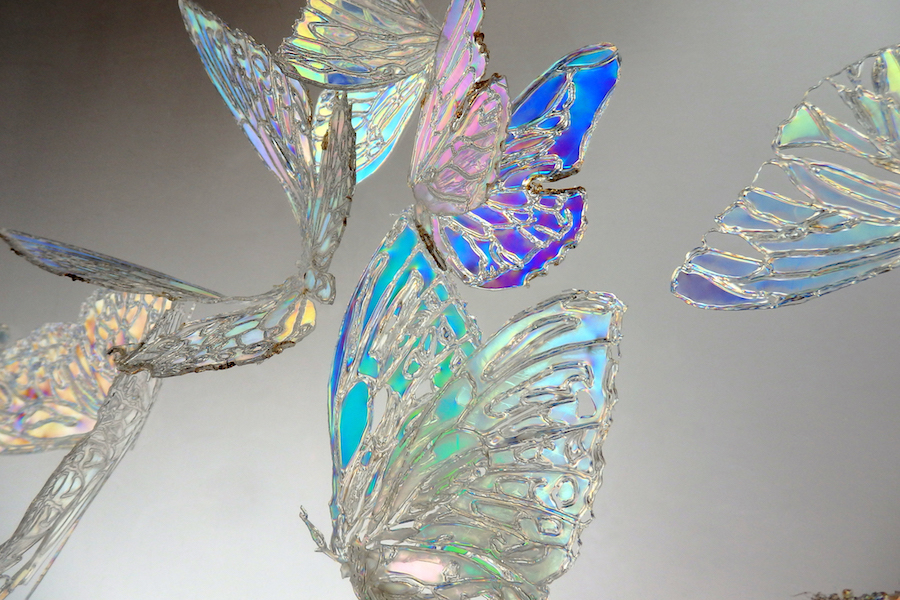
Metamorphosis

Metamorphosis
Is there anything else you want to tell us?
Yes. I am compiling a list of future thinkers, futurists, innovators and leaders in their fields to possibly cast in light portraits and add to my series, so if anyone can help suggest someone or even offer themselves I would love to hear from you.
Artist Links: Facebook, Instagram, Twitter
Share this Post

